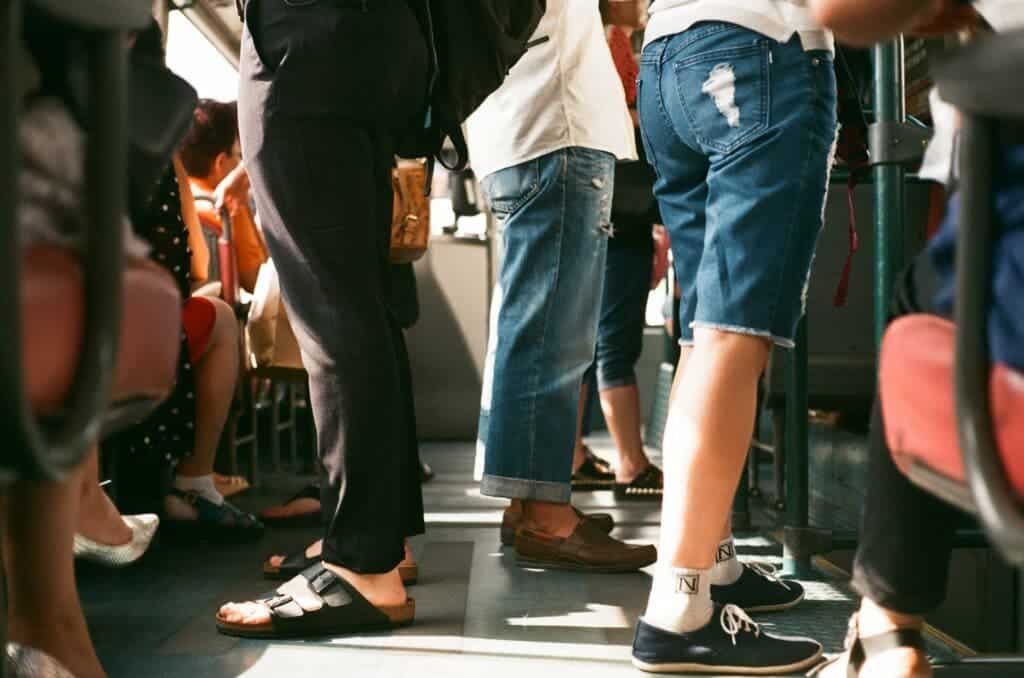The higher COVID-19 infection rates seen in black American communities compared to the overall averages could come down, at least in part, to their daily commute, a new paper explains.

We all felt the pressure that the pandemic has placed on our lives, but some of us have been having a way harder time than others. Sure, nobody likes being stuck inside for days on end, but we have to admit that it’s a luxury, and a privilege, for that to be our main gripe in a global pandemic that killed many thousands.
Minorities and poorer communities have borne the brunt of the hardship. We don’t know for sure exactly why, but it’s not hard to intuit how a lack of resources, poor socio-economic prospects, and social marginalization play into this. A new study comes to flesh out our understanding of these mechanisms by uncovering the role daily commuting patterns play in spreading the coronavirus through black American communities.
Working problems
“The study suggests that taking into account daily commuting patterns of a social or ethnic group can be enough to explain most of the differential incidence of COVID-19 in African American communities during the first epidemic wave last year,” says Aleix Bassolas, Postdoctoral Research Assistant at Queen Mary.
The team used US census data from over 130 metropolitan areas to put together two types of geographical network. The connections between bordering census areas, together with commuting graphs, were used to chart the flow of people coming to and from their jobs across the nation. Their results suggest that coming into contact with other ethnic groups at their workplace or during their commute can account for the documented “infection gap” in society.
The higher than average incidence of COVID-19 recorded in black communities can be explained through this mechanism, the team notes. Predominantly-black communities in the US are some of the nation’s poorest and thus hardest-hit by the pandemic. For many of their members, sitting it out in quarantine simply isn’t an option, and they have to take a job outside of the home to keep families fed and rent paid.
In some areas of the U.S., COVID-19 incidence among such communities can be up to 5 times higher than the overall societal average. Previous research has shown that socio-economic factors can explain part of this infection gap, but not all of it.
In their study, the authors considered the effect that residential segregation (that people tend to live in areas where their ethnicity is the majority) and other forms of segregation such as commuting have on spreading or containing the disease. This was mediated by the groups’ diffusion segregation, which estimates how likely any group is to come into contact with groups of other ethnicities. A weekly tally of known COVID-19 cases during the early days of the pandemic was used to test the findings.
Strangers on the train
Random routes were simulated over the commuting graphs the team put together, which aimed to determine how long it would take for a person from a census tract to encounter individuals from another ethnic group for the first time. This approach showed that black Americans were the most exposed to other ethnicities — in essence, they’re the group most likely to come into contact with any of the other groups.
Later on in the pandemic, as restrictions on movement began to be implemented on a larger scale, public transport usage started to correlate strongly with the infection gap observed in different US regions.
The team also notes that diffusion segregation alone could explain the observed infection gap relatively well, while factors such as life expectancy or access to healthcare services had more of an influence on the disproportionately high CODIV-19 death rates seen in black communities.
“Our results confirm that knowing where people have to commute to, rather than where they live, is potentially much more important to curb the spread of a non-airborne disease,” says Dr. Vincenzo Nicosia, Lecturer in Networks and Data Analysis, at Queen Mary and corresponding author of the paper.
“Policymakers need to take into account specific mobility patterns and needs, as well as differences in the mobility and commuting habits of different ethnic and social groups when deciding on the most effective non-pharmaceutical countermeasures against COVID-19 and similar non-airborne diseases.”
The approach used here can easily be applied to other countries such as the UK, but it’s dependent on them having quality, detailed records of commuting data. Not every government has access to those, they explain.
The paper “Diffusion segregation and the disproportionate incidence of COVID-19 in African American communities” has been published in the Journal of the Royal Society Interface.









